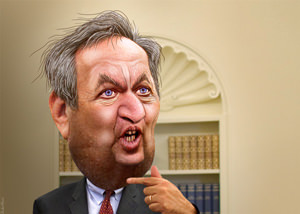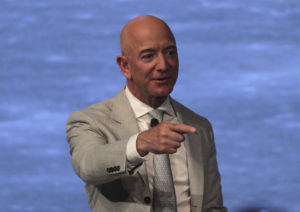Do Men With Wide Faces Inspire Selfishness in Others?
After having found that many men whose faces were broader than others' tend to lead successful firms, the same two UC Riverside professors have discovered that wide-faced males elicit self-serving behavior in others.
After having found that many men whose faces were broader than others’ tend to lead successful firms, the same two UC Riverside professors have shown that wide-faced males elicit self-serving behavior in others. Originally, Michael P. Haselhuhn and Elaine M. Wong wrote about how the prosperity of a company could be predicted by analyzing the measurements of its chief executive’s head. The results led them to conduct more studies that showed that these men were also more likely to lie and cheat, all of which was described in two papers. Larry Summers seems to be a good example of why these studies could hold some validity given his penchant for greed and his somewhat large face.
But now the two management professors have realized that these wide-faced men’s behavior may actually be part of a vicious, socially constructed cycle in which others respond inconsiderately toward them, and they reciprocate. Science Daily gives us the scoop on the latest studies as well as the wider implications these experiments have:
“People need to think more carefully about how they use power and how they can use it in helpful ways,” [Elaine M. Wong] said.
The work also shows the importance of appearance when selecting a CEO, especially as CEOs increasingly become the face of organizations.
“We don’t expect organizations to select their CEO based on the shape of their face, but first impressions do matter,” Wong said.
The four studies conducted as part of the just-published paper involved between 131 to 207 participants each.
In the first study, the researchers established a relationship between facial width-to-height ratio (fWHR) and general self-interest, demonstrating that men with higher fWHRs behaved more selfishly when dividing resources between themselves and a partner.
In two subsequent studies, the researchers examined the same decisions from the partner’s point of view and showed that partners change their own behavior based on a target’s fWHR.
In the final study, they showed that the partners’ behavior, based on the targets’ fWHR, leads the target to act in ways consistent with the partners’ expectations. This shows a link between men’s fWHR and behavior, which otherwise may be attributed to biological factors, but is also a function of social responses to men’s facial structure.
Forget Shakespeare’s “What’s in a name”! According to Wong and Haselhuhn, what truly matters is what’s in a face.
—Posted by Natasha Hakimi
Your support matters…Independent journalism is under threat and overshadowed by heavily funded mainstream media.
You can help level the playing field. Become a member.
Your tax-deductible contribution keeps us digging beneath the headlines to give you thought-provoking, investigative reporting and analysis that unearths what's really happening- without compromise.
Give today to support our courageous, independent journalists.






You need to be a supporter to comment.
There are currently no responses to this article.
Be the first to respond.